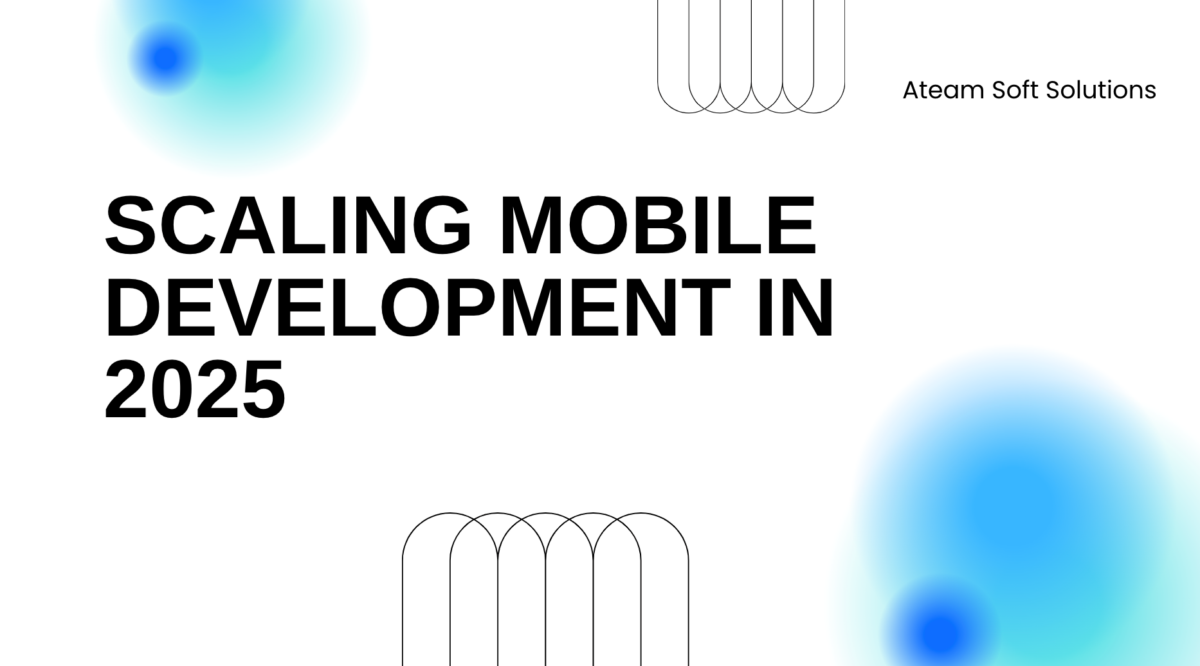This website uses cookies so that we can provide you with the best user experience possible. Cookie information is stored in your browser and performs functions such as recognising you when you return to our website and helping our team to understand which sections of the website you find most interesting and useful.
From Idea to Launch: A Comprehensive Guide to Mobile App Development

Synopsis– In post covid-19 conditions, the importance of mobile app development suddenly increased. Many companies are competing and running in the digital race. In order to generate more revenue in the industry, it can be seen clearly that mobile app development is essential for any success.
In this feature, we’ll figure out the different aspects related to mobile app development. This will include from technologies to guidance and from the cost to trend in the ongoing market.
Contents
What is mobile app development?
What is the Purpose of Mobile app development for business?
Types of mobile app development
Top technologies used in mobile app development
Superior technical kits for the construction of your own mobile apps
Broadly used framework for mobile app development in 2020-21
7 implementations to follow for a mobile app development
Lifecycle of a Mobile app development
Skelton and style of a mobile app development team
The cost of mobile app development
Duration of a mobile app development
Trends in mobile app development
5 Key factors to choose best mobile app Development Company
Everything you need to know
In 2021, it is estimated that revenue generation from the mobile app industry will see a sky and earn up to across $650 billion. There are over billions of mobile users worldwide and it is no doubt that the business will always witness a boon.
According to the statistics, the majority of the population has a habit of checking their phones every 3 minutes. The typical customer has around 20 applications presented on their gadget and spends hours in a particular app. behind, each app is competing with one another in the App store and G-Play store.
The above numbers are enough to set an example in favor of mobile app development. To know more about the topic, read the below elaboration for better understanding and set a success for your enterprise.
What is mobile app development?
Mobile app development is a cycle of developing adaptable applications that work on a phone device. This can be utilized and has an option for downloading it later. They enhance the network capacity to work with the gadget for further commuting distantly.
Basically, it has an implementation like software development and thus boosts exclusive attributes. It also empowers the backend services for data processes via APIs and examines the app on specific devices.
Although many companies are trying to build a successful app in the market, only a few crack a deal. For prolific app development, consideration of the procedure is very vital. It varies from size to cost and other requirements. Let’s not waste time to get well- defined key components behind the operation.
What is the Purpose of Mobile app development for business?
Developing an application can add value to your marketing strategy. It also helps in connecting with the target audience rapidly. It’s an overall package for building direct relationships with the customers for later growth. Its significance is to fulfill all the needs of the public efficiently on a digital stage for future ROI. In addition there are many other common causes to build an app but let’s have a look to top 10 purposes:
- Evaluate weightage– the upcoming digital world has increased the importance of the app completely. With the advancement in technology, every business started relying on them from head to toe. One of its key benefits is ‘retail marketing. It will prioritize convenience and clarity between the customers without con.
2. Building a brand- after adding weightage to the customers, it will definitely enhance building a great brand. This will give leverage to the app owners for channeling it directly to the customers. Using the correct data and valuable elements like logo, colors etc. impacts the brand marketing. You can also engage celebrities that fit within your budget for user’s dominance.
3. Quick response- people live in social media or internet 24*7. It plays an integral part in everyone’s lives. It is not only the leads that matters but the quick response also influences. An influential mobile app or its link will help the customers to hold back with the business and vice versa. They can easily access the information whenever they want. In cover, you can also add a feature called ‘live chat’ for better and instant communication.
4. Grab the attention- a customer’s attention is foremost for every trade. It doesn’t lie on a constant rate but fluctuates all the time. There are other ways in mobile apps that can uplift the company i.e. Loyalty schemes. These involve instant rewards, customized product recommendations or social sharing.
5. Battle mode ON- keeping the competition mode on can also help the business to grow. Tracking the competitors, you can also track the changes ongoing in the inside industry. It will thus give an idea of many ways to efficient strategy and features.
6. High engagement level- high engagement level focuses on generating revenue and customer’s commitment. Oversee the customer’s reaction and ROI might increase value in it. App owners should take care of the particular segments. This has content delivered to users, personalized app messages, discounts and offs, etc. this will only be possible under perfect working UI/UX designs.
7. Direct marketing- developing a mobile app is meant for direct marketing in business. Direct access to user’s detail, monitoring data, entry points are some of its components for better association. These features approach push notification, in-app click through rate, reactive time and others.
8. Power of social media- the more time the people will look at your app, the more profit your business will get. There are multiple options available in social media for brand promotion. Running a social media campaign in YouTube or Facebook or any will get the immediate response for sure. This will encourage more downloads and more sign ups. You can also add beneficial features like ‘sharing CTA’ for business boost up.
9. Client’s insight- the primary motive of any business is to get the choice of the customer. Your app should serve customers in an easy and trustworthy place. Tools like Firebase or UXcam provide full detail of the user. You can also make charts of regular, monthly, yearly, caste, location, installations or any other survey. In many cases, loyalty programs will fulfil your needs.
10. Customer support and feedback- stay ahead in the market for instant and 24*7 better customer service. Never hesitate to face any queries of the client. Also you can add features like click to call, route for direction or analytics for better reach. Post completion of the process, reach the audience for feedback and observe for good or bad. The feedback system includes widgets, surveys or rate my app.
In a nutshell, there are ample number of ways to find out the motives of creating an application. It will always be a limitless mechanism to reach to the end while being an app owner.
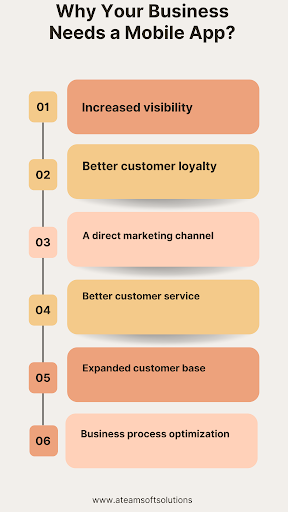
Types of mobile app development
There are many types of mobile app development exercises in the market. You can choose according to your needs and strategy occurring in a business.
Every part of a development contains its own advantages and dislikes. Therefore, given below are some of its types and details to approach.
-
Native app development
-
Cross platform app development
-
Hybrid apps
-
web apps
| Native app development | Cross platform | Hybrid apps | Progressive web apps | |
| 1 | It is produced for a single platform but claims to offer fast delivered performance. | It is to perform on multiple platforms. | They are shared between mobile apps and computer websites. | They are working on both web and mobile phones. |
| 2 | Local applications are fabricated utilizing the apparatuses and SDKs offered by stage proprietors like Apple and Google. | It can be done in many programming languages and later assembled independently. | It uses technologies like Javascript, CSS, and html for a bunch of required mobile stages. They also work utilizing web compartments by running browsers. | They work for internal browsers. It can be seen as a form of ‘web app’ that even runs for mobile phones. |
| 3 | Its features should be according to the SDKs tools. | It has a risk of bugs as their codes aren’t written on native. | Low chances of native assistance. | Network connection is important for interactivity. |
| 4 | Its cost and maintenance is high They use the particular stage i.e. SDK. | Their cost is dependent upon the third party resources. They can use different stages. | They are purposely built for web development rather than natively. Its web instruments can be used for construction of mobile development. | It runs through the browser capacity. It only works as a browser or URL via the internet. |
Top technologies used in mobile app development
It is truly said that the genuine contractor can build a real home. Likewise it is true in this industry. A genuine mobile app developer can understand the application build for a business. An authentic app developer not only develops but also takes care of the other requirements.
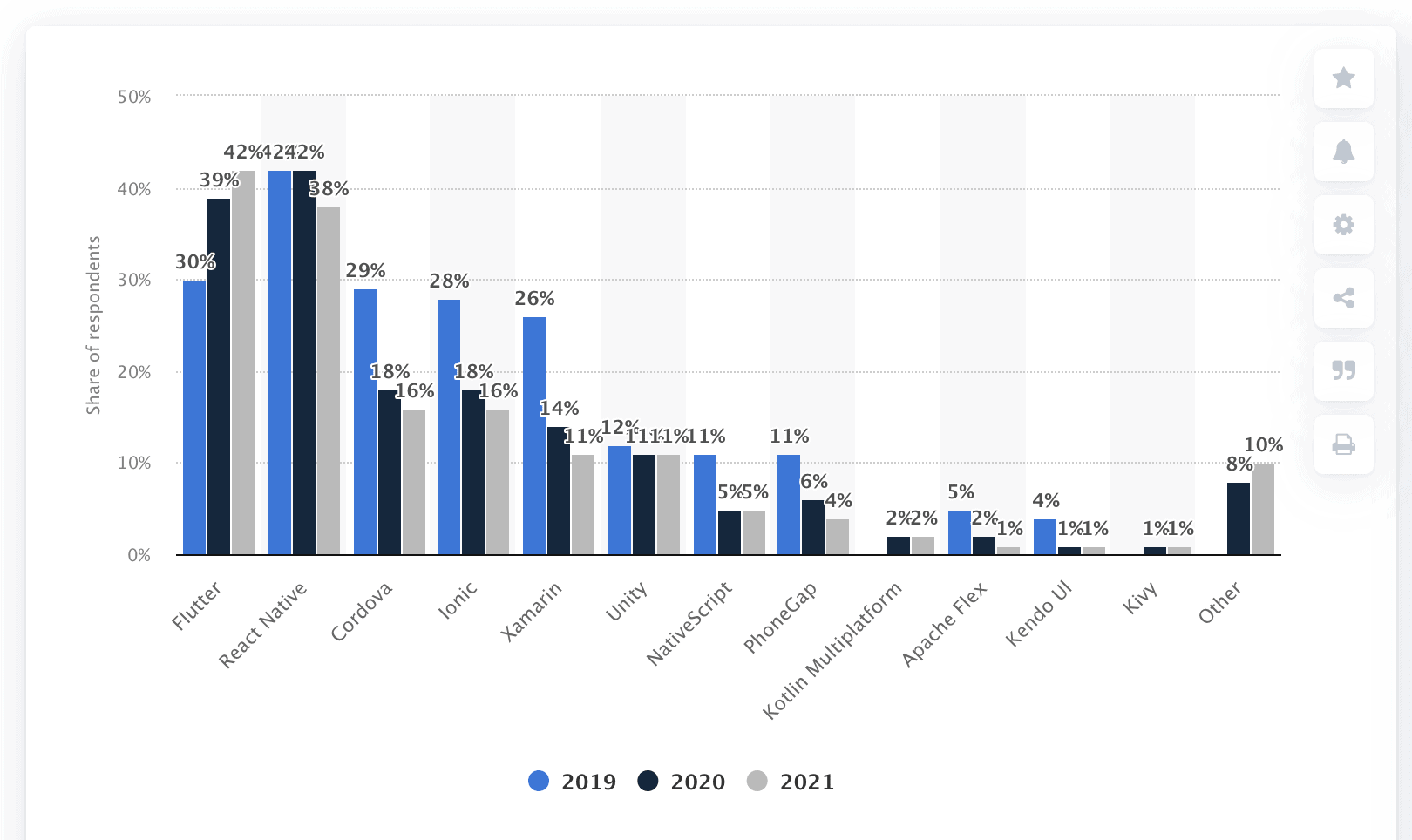
Cross-platform mobile frameworks used by software developers worldwide from 2019 to 2021
Every business needs different kinds of technology based on their product plans. It consists of 5 varieties, from price to functionality. To finalize any of the technology, it is keen to know the knowledge in detail.
- Java- this programming language became popular since the introduction of android in 2008. This language has made the app easy to use and relatively supportive. It also has an extensive source of open libraries for multiple types of users.
2. C++- this programming language is simple compared to any other languages. It has a dynamic specification to build various apps like android, iOS or windows. It will deliver the best performance once created to use multiple times. Its sister language named Objective-C was formerly used by Apple before the introduction of language Swift in 2014.
3. Swift- this programming language is an ideal for the Apple OS. It is superior to the iOS apps and has a quality of less coding. It is thus acceptable to all the Apple developers for different models.
4. HTML5– this programming language is suitable for web-front apps used for mobile phones. Businesses using a cross platform sometimes want this language for better experiences. It also works for offline browsing yet in affordability.
5. PHP- this programming language is a three-layered process suitable to create both i.e. mobile apps and web apps. It is highly recommendable for database unifications. This requires an intricate backend and thorough relocation information. It offers structures like Laravel, Lumen, Codelgniter and Symfony.
Superior technical kits for the construction of your own mobile apps
This pandemic not only turned business into digitized but also saw an increment in the developer’s industries. Their method of using the correct technology at the right timing is a privilege for any business.
Large scale projects prefer these 5 types of tech kits for better results. They start their programming from the scratch and claim to hit the target audiences.
-
Rhomobile- it is a type of substantial Rhodes compatible with native app development. It is an open source structure used for multiple platforms for native. It’s recommendable for cross platform, native customers and all types of firm’s progression. It uses processing like Ruby, HTML5, CSS3, and JavaScript for building iOS, android and windows.
-
PhoneGap- it is also cordially known as the Apache Cordova. This is also similar to the Rhomobile for its framework and uses technologies like CSS3, HTML5 or JavaScript. This has a blend of native and hybrid code snippets. Although it’s used for iOS, Android and Windows, it’s neither a pure native character nor a web based app.
-
WidgetPad- it delivers the best results in open source frameworks. It is ideal for cross platform mobile apps and operates under JavaScript and HTML5. It explores the options of source code, distribution, editing and versioning. It also enhances the platform for iOS, android and web.
-
MO Sync- it also practices the diverse form of open source mobile app development. They make use of languages like PHP, JavaScript, Ruby, and python. It is unified with Eclipse based IDE and uses various stages of C++ and C.
-
Appcelerator- it is best used for hardware based development.It employs HTML, PHP and JavaScript for its formation. It fabricates native apps for iOS, windows and android.
Broadly used framework for mobile app development in 2020-21
It is well said that in 21 century, every business needs mobile apps to encourage them to extend business. There are certain ways to approach each mobile app and its highlights based on productivity. Hence, it is significant to clarify each framework that suits your message and model:
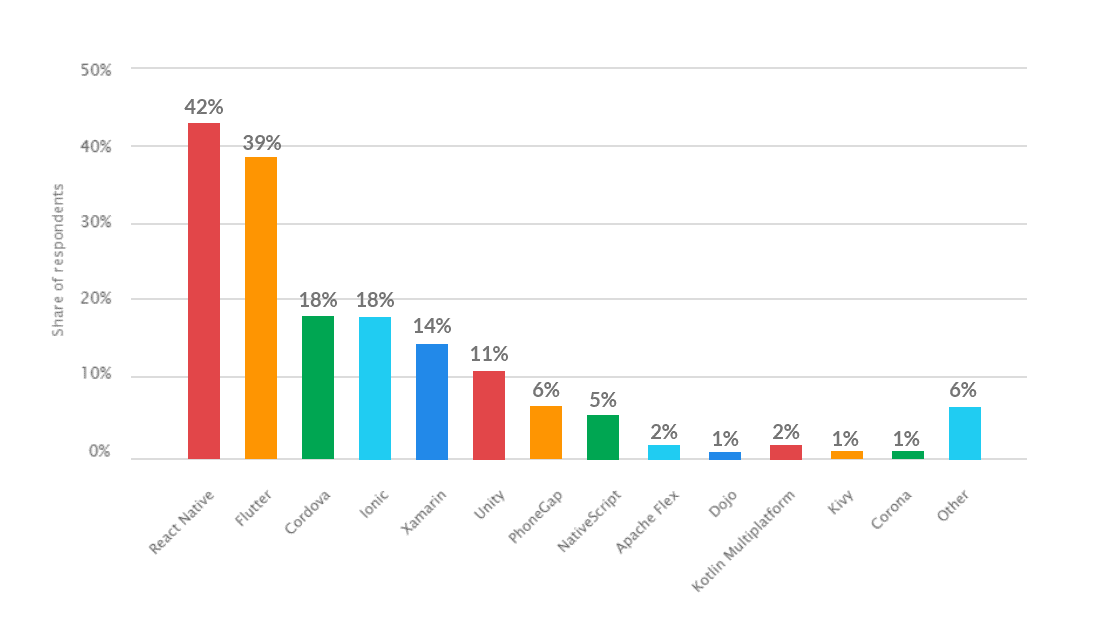
-
Mobile angular UI- Mobile angular UI is a best amalgamation of Angular js and Bootstrap 3 syntax. It is an open source mobile framework providing new UI components like navbars, sidebars, modals, overlays, switches, etc. because of its combination, developers feel comfortable to start from the scratch and work. It also allows firms to make HTML5 hybrid mobile and desktops without any efforts.
-
Felgo- it is formerly known as the V-play engine. It is famous for making mobile games and apps via cross platform development. With its Qt formation, it can easily assemble modern apps natively from a single code base. It is flexible for iOS, android, desktop, web and embedded platforms.
-
Native script- it is one of the most aspired technologies used for Apple iOS and android apps.It exercises the programming language like JavaScript or other compatible ones. Its features include native API reflection, Angular integration and Vue.js integration. It has an advantage to allow third parties from Maven, npm.js, and Cocoa Pods to enter into their apps without any coverings.
-
Xamarin– Xamarin is a cross platform with coding C#. It utilizes single code across windows, iOS, android and other stages. It also has a profit from code sharing that builds apps rendered to native experiences. It has a trump card of saving time and cost. It also has a resolution to the full spectrum functionality revealed by the major platforms, i.e. based on capacities and devices.
-
Ionic– it works under the HTML5 and utilizes as a widely preferable model. It eases the creation of native apps and their UI operations using the composition of HTML, CSS3 and JavaScript. This technology labors on iOS’s UIwebView or android web View. It is made of Angular JS and Apache Cordova. It is also the widely used convenient way for developers to oversee cross platform.
-
React native- it is another most preferred native development technology. It provides enough support to the IDEs and other mobile development instruments. It authorizes mobile development relative to native iOS and androids. It figures native apps with JavaScript. Using such a model gives real results identical from an app build with Objective-C/Java or Swift.
-
Flutter– Flutter is the new mode of cross platform nowadays. It uses the technology ‘Dart’ that experts deliver rapid proceedings, include features of UI and fix bugging in no seconds. It has a variety of plugins backed by Google that gives permission to build for both android and iOS.
7 implementations to follow for a mobile app development
Developing a mobile app is an intricate method and it must be relevant to every user, every minute. The process of developing an app should be helpful to organization, authentic and match each need of the client.
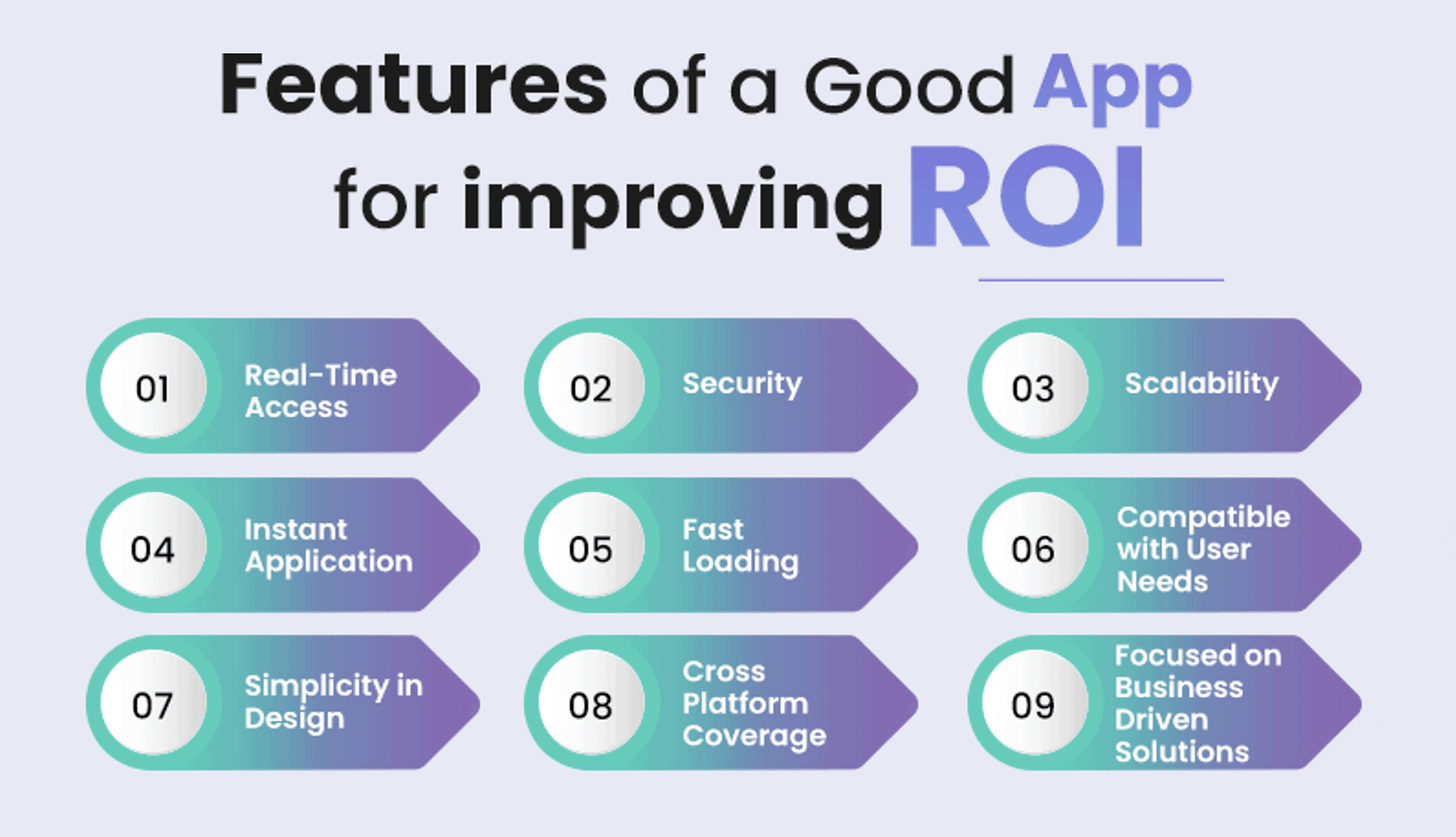
There are many companies in the market that fail to deliver the perfect app i.e. smooth to the business and advance to the needs. Below are some of the best practices to follow that will be supported as guidelines for every genre.
1. Scheme a strategy– this is the primary step of every business. If it is used promptly, it can turn a table into success. Every business needs a different strategy and every strategy needs different app development. Thus it is very important to know the objective of the business and accordingly to make an app. This will provide a vision to the project, planning and strategy of a design accordingly.
2. Break a bundle- developing a mobile app seeks a lot of tasks behind it. Therefore it is essential to break every category at a regular interval of time. Breaking down and noticeably maintaining the category will help the developer in the right direction. It will also vindicate the control of the overall procedure and be beneficial for other team members.
3. Features and functionality- this can be a huge job and crucial for any developer. It is tough for businesses to choose the right type of features and its functionalities. A business and creating the best app depends upon the features and their functions. Features should include removing bugs, detecting viruses and other major elements to follow. Similarly, it is also keen to keep in mind that every feature is compatible with each other.
4. User experience- a satisfaction from the app and its features will make the potential user. If the user can easily handle the functions of the app, it will bring good goodwill to the mobile app development company. Positive feedback can add convenience and reliability to the user experience. Good investment in good resources shouldn’t be compromised.
5. Guidelines to follow- it is compulsory to follow every guideline related to mobile development. Ignoring any of it can hamper the app and your investment from the beginning. For an android app, android developer guidelines to be followed definitely. For iOS, Apple developer programs should be kept in mind.
6. Revision to reform- never forget to take an update post each step.Improvement and maintenance depends upon the technical updating. It may not match the user’s expectations and requirements. Hence, planning for every update can monitor the cost and its features.
7. Test and attention- throughout the whole procedure, testing of the app and its performance is very vital. Testing periodically will fix your bugs and make the process easier. There are many forms of testing software available in the market or online to test your business based apps. Later the testing, saving the data shouldn’t be avoided for sure. Taking preventive measures can neglect hacking and other cyber-attacks.
Lifecycle of a Mobile app development
What is the lifecycle of a mobile app development? How do their steps look alike? Is it helpful for a user experience or vice versa?
A lifecycle of a mobile app development consists of various execution steps. Each step will get you through the last stage of your company’s possession. Below are some of the steps to be carefully observe in the journey of the rising business:
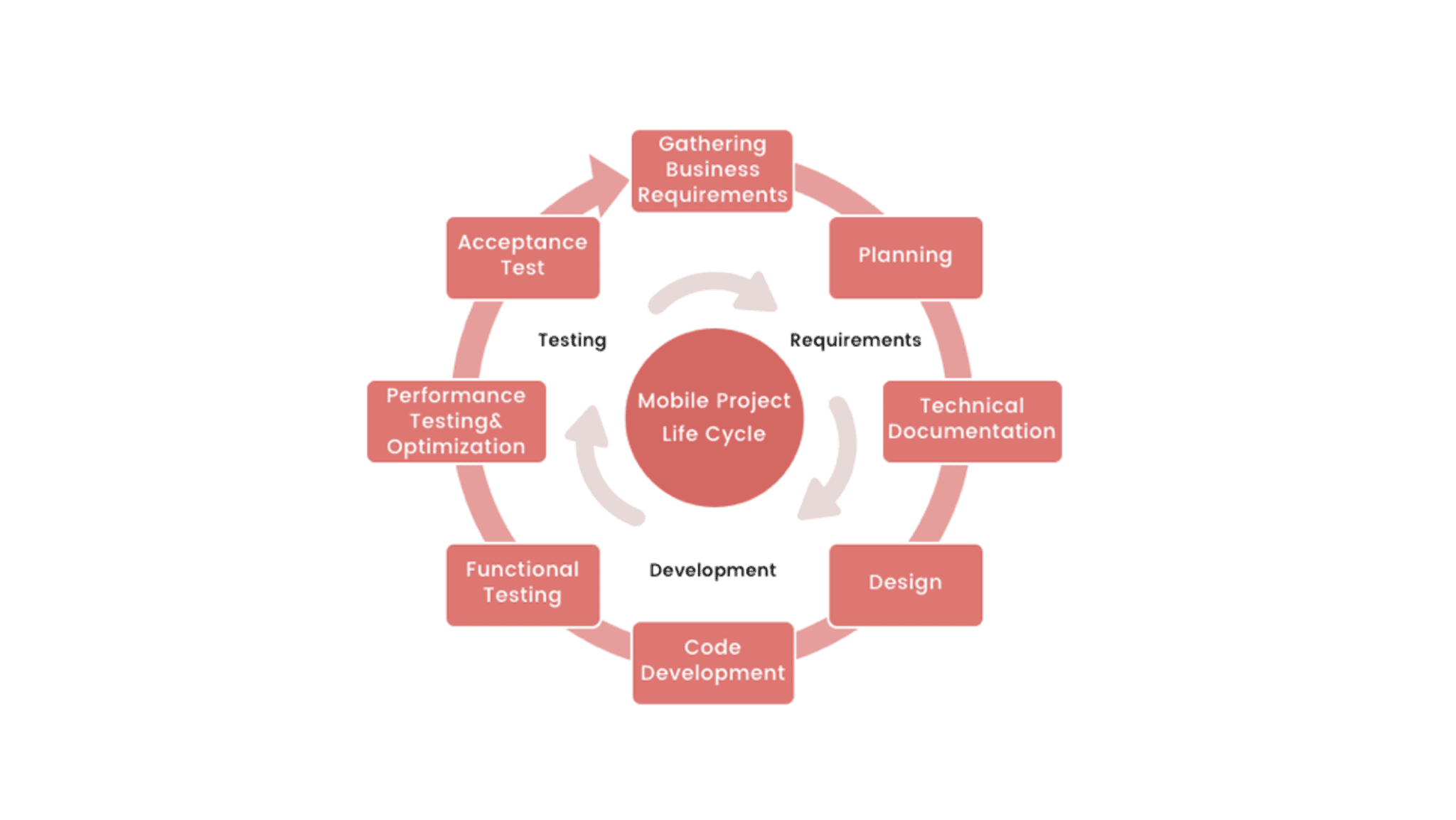
Step 1: Research- Before the commencement of a design and development, research regarding your target audience, budget, competitors and other requirements are necessary. Note down unlimited questions that come to your mind and accordingly research it deeply. A single mistake can bring back your leg and this can affect your business.
Step 2: Deciding the destination- This is the phase where you can draw your objectives and decide an end. After determining the app, you need to outline a map for your business. The goals will act as a balance between a feature and its benefits. This will also include related issues, solutions and core functionalities.
Step 3: Blueprint- It comprises an app’s characteristics and its look. It will also divide the structure into in-house and outsource. There are many wireframes and storyboards available in the developer’s folio for your business. These best-fitted frames will also provide you a hint to outlay your own creation.
Step 4: Backend service- Every storyboard and wireframe act as a backend service to the clients. It varies from different factors like data diagrams, APIs, servers, push notification, data integration and many others. In SMEs, they choose a BaaS platform as their service. Contrary, it can encounter technical limits in the process. So, it is better to improve your frames at a specific interval of time.
Step 5: Conclude and test- Once the changes have been done in wireframe or storyboard, it’s time to finalize it.Finalizing it with the whole team including the other roles participating in the process is essential. Selecting a base model or ‘prototyping’ the app gives the opportunity to identify the pros and cons behind the mobile app development.
Later, you can test the prototype of the development and evaluate the functionalities. Adopt technology like UI/UX for correcting faults. Your goal should be to finalize the design and test it till last.
Step 6: Work in progress- Development of an application actually involves many steps during the process.If you aren’t using any development platform, the developer needs to take care of the storage materials, APIs or servers as backend. Never refuse to create an app store as it’s easily handled and doesn’t overlook any reviews.
Another important point is to hire an authentic developer or ios app development company for coding and programming. Never miss a single word while signing an agreement with them. This step will be considered as a final cut to your business.
Step 7: Launch and release- After you complete all the above steps, start making out the marketing strategy for your app launch. SEO or App store optimization (ASO) will play an important part in the marketing section. ‘Keyword research tool’ will tell the mood of the market. You can also launch promotional video ads or shots for growth of your product. Build a website or attractive landing page to grab the attention of the market. Choose a best-fitted identification like logo, name and press kit or testimonials for further campaign.
This is the time when you’ve completed all the steps above and are ready to go to the market. Officially, it will be great to announce and create some buzz around the competitors. Promotions around the influencers, bloggers or any common man is also significant.
You can also choose the path of the email campaign and later track the KPIs for analytics. This lifecycle will always maintain a balance between your digital approach and customers.
Skelton and style of a mobile app development team
What comprises a mobile app development team? Are they worthy to pay for? Will they perform sincerely? And much more…
There are so many questions loading in your head while appointing a mobile app developer team. To start with the app development process, it is important to hire the right amount of people.
Mobile app development team is a set of skilled people engineered to architect your application in favor of the business. A genuine team will help you with selecting the right package, explain features and project return into it.
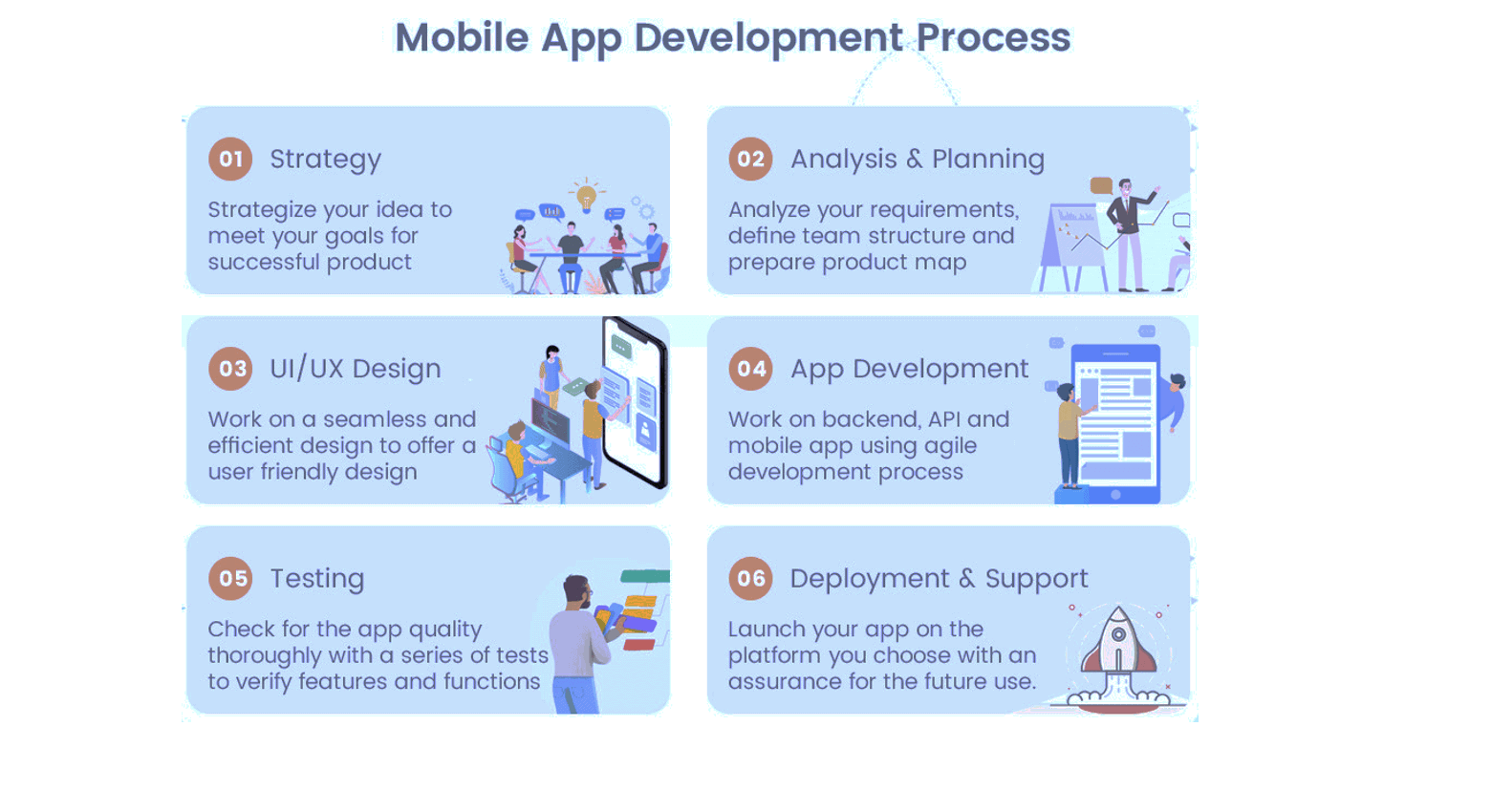
They understand modern technology and dig out every bit of it. Further details are based on team roles and their style to get more clearly:
i. Project manager- every business has a project manager to lead the team. Eventually, he/she is responsible for the overall result in the business. He might be the higher authority of the company or any close to it. They work with the client to acknowledge the overview of the product. They manage to keep filling in as the fundamental concern of contact with the customer. They communicate with the other team members and explain all types of troubleshoots with them without fail.
ii. Scrum controller- A Scrum is a project management plan that ensures the apps to work speedily, flawlessly without compromising quality. Agile is the software development method to support scrum.
A scrum controller is important to handle the procedure of Agile. They oversee the process ongoing in the business. They are responsible for assigning tasks to each member and take follow ups regarding it. They give the current status of the report and about the individual job to the project manager regularly. They too take care of every troubleshoot that takes place in the process.
iii. Product holder- this can also be said the ‘stakeholder’ for daily operations in the team. Their job is to cater to the user’s needs and their budget. They understand the vision of the client to provide clean documentation. They maintain all the requirements and ensure consistent being followed. They also work throughout to clarify each query the client comes across.
iv. App designers- they are in charge of the formation for the app. They decide the look, audio and visuals, color, graphics, animation, etc. they maintain the communication with the scrum controller to deliver every asset on time and check the order.They consist of a group that look into each other and feel the app for positive business.
v. App developer- they are also the ‘coders’ for maintaining the ground level work in the app. They nourish the tools during the process and are responsible for all types of coding manufacture. They fix bugs and inspect the other members of the developer’s group.
vi. Analysts- they are called the ‘communication accelerator’, they sometimes can be the scrum controller or product holder in many companies. Their work is to maintain project requirements of the app. They also act as a messenger between the product holders, designers and developers for translation of jargons.
vii. Quality assurance leader- this role is depending upon the size of the project and considered as an optional. They are responsible for testing the product quality in the process. Under the supervision of the scrum controller, they similarly take care of the bugs and fix errors. They create tests according to manual or automatic.
The cost of mobile app development
The success of the mobile app development for any business depends upon getting a target audience within cost. However, today with the increase in demand of these app developers or team, they have built customized packages for different designs and models. The price for every app and its feature fall under some factors:
1) Business pattern– this is the key step while building an app. It is necessary to analyze the pattern that fits into your business. This will decide your target audience and other sources relatively. Knowing the mood in the market is the primary pattern for any business. Likewise, you can figure out other patterns regarding the app and accordingly contact the developers.
2) Type- after sorting the pattern, this is a crucial step for any party to decide the type of an app. There are various types of apps to research i.e. suitable for the organization.It can act as a significant cost for an app.based on the complexity, there are 3 types of apps i.e. web app development, native and cross platform. A developer should take care that the app should run smoothly in the iOS, windows or android.
3) Platform- for a successful journey of the business app, it is important to walk through every step carefully and smartly. Undoubtedly, an ideal platform for an app can be expensive but it should be compatible for both iOS and android. Considering the current market share and publishing it on an apps store will add taste to your business.
Google play store charges around $25 for uploading your app and takes 30% commission post purchase made with it. On the other hand, Apple charges $99 as an annual fee. The commission process in this is similar to Google app store. Also for developing the iOS is less instead of developing the android apps.
4) Function- estimating the basic price of the function and related features can itself be a huge task. Adding more features will tend to increase the cost. The advanced feature will act as a berry on top of a candy. There is no definite cost in choosing the application’s features. Additional models like subscription based or backend support may shoot up the cost in no time.
5) Design- this step depends on the developer’s team. Hiring an app development company should be confident enough to cut out any excess. It can be freelancers, fresher or experienced companies in the market. The idea is to hire generosity and authenticity. Fraudulent can be done by showcasing their website fancy and fake. Research or contact the known for best results.
According to the Clutch survey, the maximum cost of the developing app can go up to approx. $171, 450 extensively from $30K to $700K. Estimating the expenditure to create an app is fundamental as it affects the pocket of the business and customers.
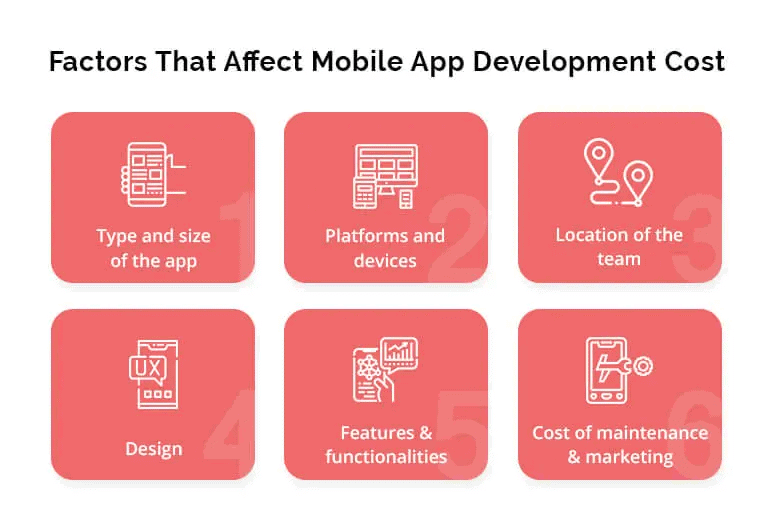
Duration of a mobile app development
What amount of time does it take to fabricate an app? Will it be covered before launch? Will the developer be able to complete their task on time?
There are unlimited questions that arise in mind for app development. It is not only the cost but also the time that matters. It takes as per the complexity of an application and its features.
Although the duration to make an app takes a minimum of 3 months to 9 months at maximum. Every platform has its own scenario and time taken. Beneath is the time table for each stage during the process:
-
Project theme (1-2 weeks) – sometimes ‘less is more’ thus, it is better to write a theme in short. The brief theme will take less time to understand the project. It should require task measurement, non-disclosure documentation, request for proposal (RFP), price and hint of delivery date. These topics shouldn’t be underestimated nor ignorable.
Especially in RFPs, it is very important to look after challenges to developers, ideas for growth and ask for better explorations.
-
Research with developers and their team (4-5 weeks) – this is a consequential job for any app development company. Their job is to give all those ideas that will work for increment. The motive is to create an acknowledgement between the user and the market.
This research should contain Minimum viable product (MVP). It is a step to include all basic features in the apps. User’s stories for plan of utilization in the market. And prototyping for testing and validation the app.
-
Time for design (sprint) (6-12 weeks) – usually, each feature has their own time and it keeps fluctuating for improvement throughout the action. Desiring for a specific feature can take much time for design even for users later. It is the developer’s duty to explain each set of time for featuring an app. They must always be ready for new dares, adaptation and feedback.
-
Prototyping (6-12 weeks) – prototyping functions along with the Sprinting. This has the advantage of consuming time efficiently. If the developer does not mention the term ‘rapid prototyping’ for comparing ideas with outside users, means the project will complete in more time. Either if it’s planned initially, there will be no space for making changes.
-
Post to ‘app stores’ (1-2 weeks) – this step might be divided into two parts i.e. presentation and feedback. While presenting the apps, you should keep in mind these phases like business contact details, screenshots, statements, symbols and displays. However, there is no doubt that the iOS system has more longevity compared to android production for legal violations.
-
Final cut and post launch (any time) – in the business of mobile app development, the chances of keeping on improving is always high. Updates and maintenance will never give up. You will tend to change any of the features till last. There is no specific time for upgrading the app or its features. You will do whatever best goes for the industry and other businesses.
It is important to make sure that the development team involves and communicates each step to the business or concern owner. It will have a great impact on reviews and improvements.
Trends in mobile app development
In today’s era, the industry of mobile app development is cultivating. It has no- full stop to trends. It has become the mainstream success for any business.
Today mobile isn’t limited to contact people rather it can be utilized for multiple purposes. By the end of the year, it is estimated to make across $600 billion business. To understand context clearly, below will look some of the trends ongoing in the mobile app development industry:
-
Funky Foldable- with the upcoming features like foldable display in products, technology is all set to drive new ways. In 2018, Google has announced the official support for the specific product named ‘screen continuity’ API on androids. A challenge for the foldable phone nowadays is buzzing in the market. It seems likely to adopt various strategies regarding it. ‘Unfolding’ will impact positive vibes on users as it will provide a large screen and multi-windows for multiple tasks at a time. Contrary, video streams or games might crop major benefits against screen size.
-
Unbeatable AI and ML- the reason behind the overnight popularity of Facebook is supreme AI i.e. artificial intelligence. It has a gem of filters for finding out a user’s personality like age and others. Both the technologies are considered to be the best for app development.
Other apps like Replika or Cortona added further research for much improvement. Surprisingly, it has given valuable data and pure analytics. In 2019, Apple also joined the hands in the process to dig out more information and resulted in the achievement of more to iOS.
-
Evolutionary Chatbots- Over half of purchasers need more custom help to speed up making an online buy. And for this type of buy, chatbots are an ideal method to expand that kind of client relationship management.
Shockingly, it is observed that there are only a few apps positioned chatbots for better UI/UX services. Fortunately in 2021, about 80% of the businesses have adopted the system appreciating the quick response.
-
Witted wearables– another product trending the market is techy wearables. According to the survey, the quantity of people wearing smart technologies is 453 million in 2017 to 929 million in 2021.
With the increase in technology, it is also important to reach that kind of application. For e.g. Apple watch has announced to have its own app store and need not to compare with iOS app. Indirectly, this is an alarming message to all developers to wake up with more excellence in digitalization.
-
Pay with mobile wallets- in the last couple of years, it is not necessary to heavy your pockets with purses or wallets. Thanks to mobile wallets!The demand for mobile wallets like G-pay or A-pay has arisen even in the rural areas. Along with Google and Apple, there are several other platforms offering easy and safe payments.
-
AR and VR–it is one of the most used mobile app trends in the technology world. Using this technology, Google is about to launch a new skill for it’s ‘maps’ allowing directions via camera in actuality. In 2021, it is declared as one of the most important tools for mobile app development trends.
-
Cloud storage- Cloud innovation assumes a significant part in building Android immediate applications. In addition, iOS devices also use the same data sets in some applications.
Similarly, ‘Cloud integration’ helps with the mobile data effectively. It also motions more storage, more capacity with less price and is responsible for becoming the next trend in app development.
-
Formulation of demand- the ‘on-demand’ economy will go further into additional perpendicular and upset businesses. Therefore, we are hoping to see this feature becoming the next trend in these development companies.
-
Instant applications- in this category, native apps aced the condition of most user friendly apps since 2016. There is no need for download and are equivalent to both iOS and android. With more in demand and eliminating download, it has achieved the most used trend in business.
-
Application security system- even the giant companies like Google and Apple are having risk of hacking data. In order to save from cyber-attacks, it is necessary to safeguard with digital security. With more risk of viruses, this will always be the never ending trend in business. Around 37.3% of the businesses accept that digital security is the huge mission to tackle. Even with the introduction to the new features in the apps, the issue of security falls in.
5 Key factors to choose best mobile app Development Company
During the last few years, the huge investment has been made by the organizations to the mobile app development companies for success. An influential mobile app has the power to bring the business from zero to top.
There are many varieties available in the market for mobile app development companies to choose for business assistance. Each company has their own value, their own USP. Every business has to research before choosing any IT app company. One needs to know the details and chart out the ROI while hiring.
Here are some 5 essential pointers to identify best fitted company for your businesses and revenue generation:
Response and reviews- this is done by most of the clients and businesses. For more information, you can also dig out the one of the users related to it. Having a conversation, you’ll be able to find out the advantages and disadvantages. This will help in analyzing it better and quicker. Outsourcing from the experienced shouldn’t be forgotten to consider.
Safeguard- leaking the project, building replicas and hacking are the major fears of any business. It is therefore to hire someone i.e. genuine to the company and claims to protect the information. The commitment to remain confidential shouldn’t be compromised by the app development.
Effective communication- there are many app owners complaining about the developers for the communication gap. They are lacking in reporting progress and delivering information relatively. In many cases, clients find out delays in the process or substance missing out in the application. This can hamper the development cycle and the business. Having a regular report of the progress may deduct the company from any obstacle.
Designing criteria- designing a custom app can be different from designing a simple app. It may vary in every stage. This is the reason why the company deals with huge investments and experienced developers. They should have great knowledge of UI/UX skills and the power of delivering additional information. Owner must look after the portfolio before hiring.
Quality assurance and testing- Most custom phone applications are found to have specialized blunders and bugs. Daily break in the working of the phone’s applications prompts loss of clients in it. That is why development companies should update themselves for each other’s future. Latest tech in QA and testing assures the minus of bugs and errors.
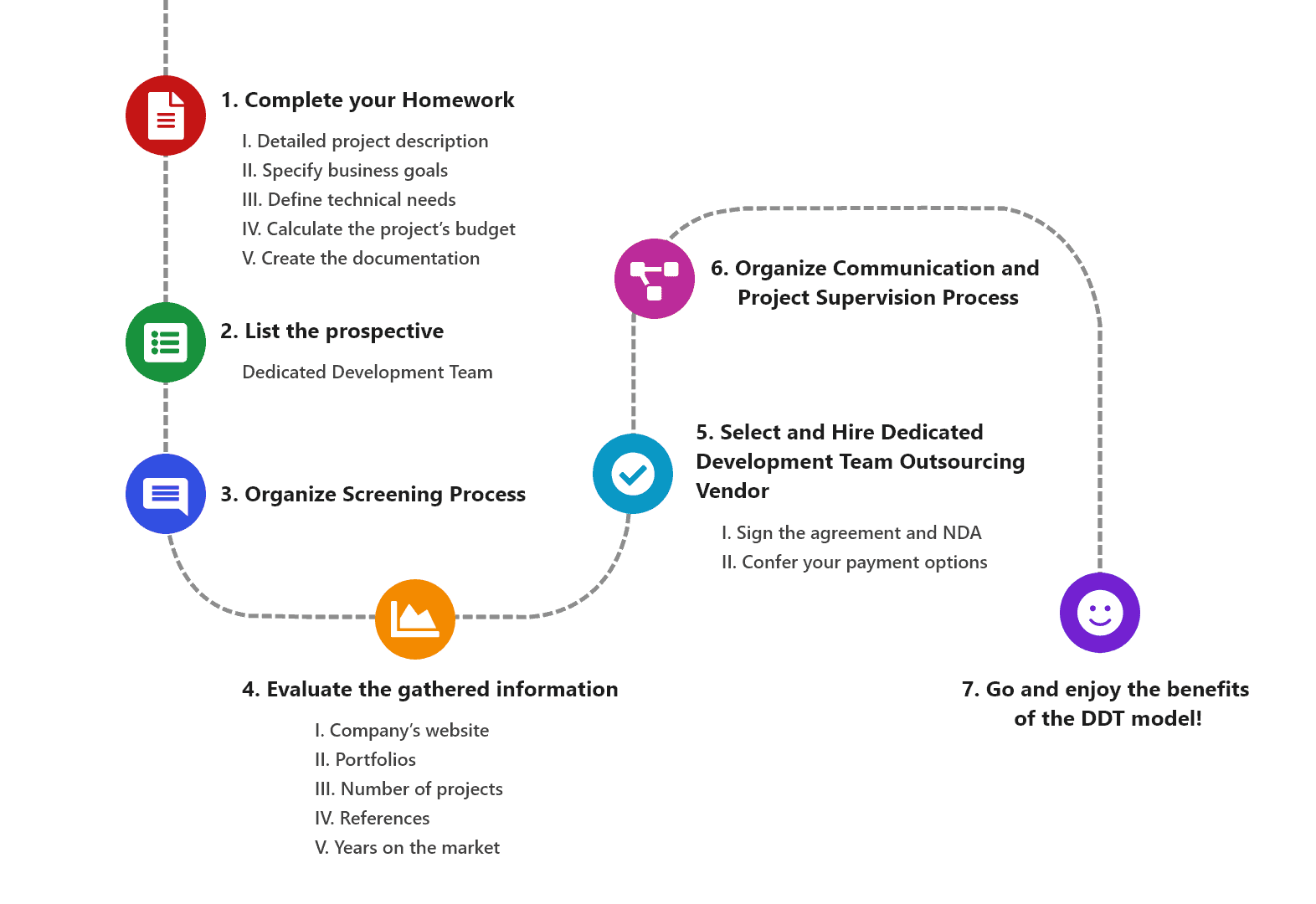
Inference to the topic
The concept of mobile app development is like an open book. It supports the scenario of moving your business ahead. Following the right path and correct guidelines, any business could ace off the show.
Another relevant factor is investing an amount on a genuine mobile app development company. This can bring your business up also and with one wrong decision down too.
To avoid all the strains in the business, above are the topics covered enough for you to understand what is best for your business!
Email us at [email protected] or fill the form below for more information or queries related to Mobile app development and our experts will be happy to answer you.


